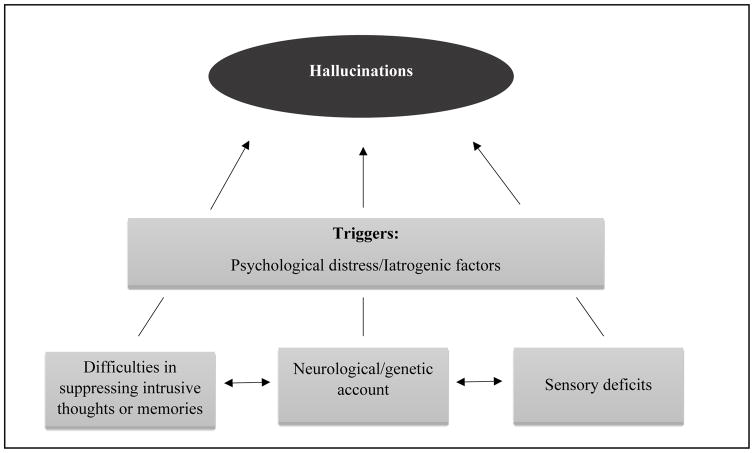Figure 1.
According to the ALZHA model, hallucinatory experiences in Alzheimer’s disease mainly occur in patients with trait markers (i.e., difficulties in suppressing intrusive thoughts or memories, neurological deficits, genetic predisposition and/or sensory deficits), who experience, at a given moment, one or more state markers that will trigger the experience (e.g., psychological distress and/or iatrogenic factors).

